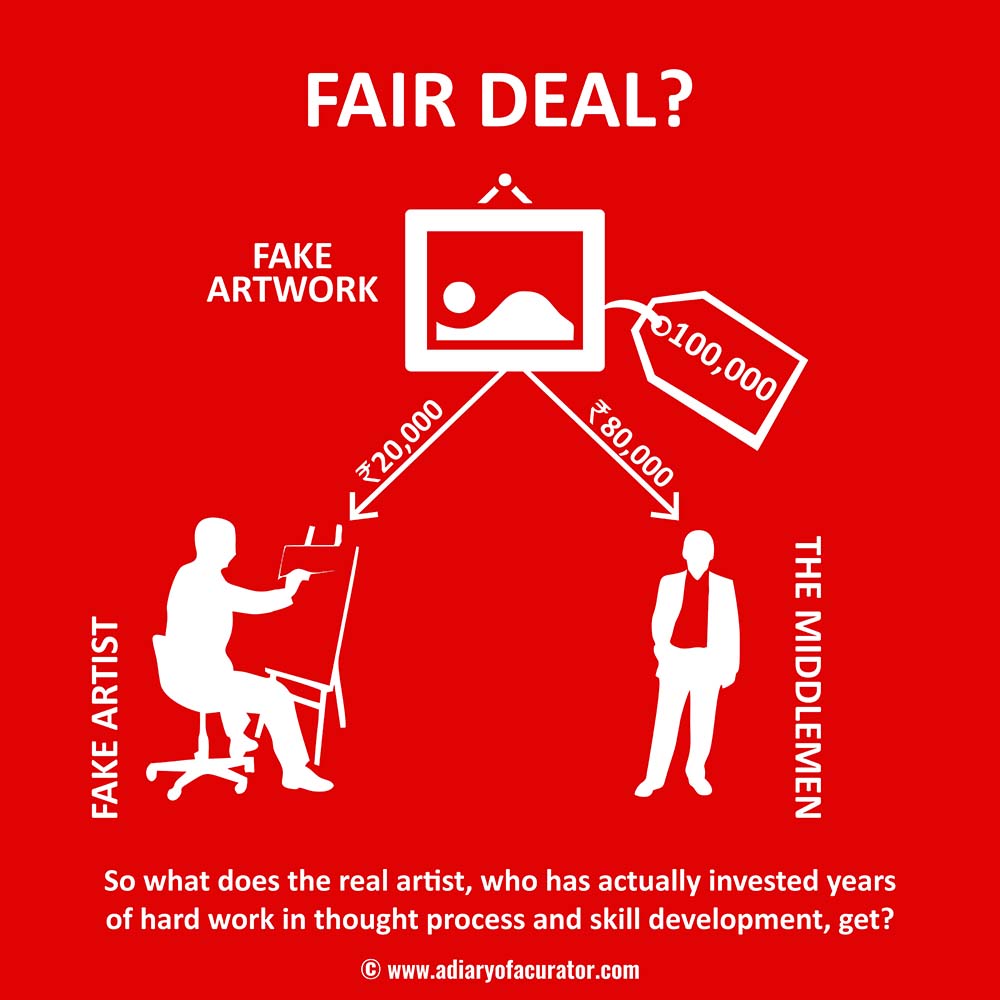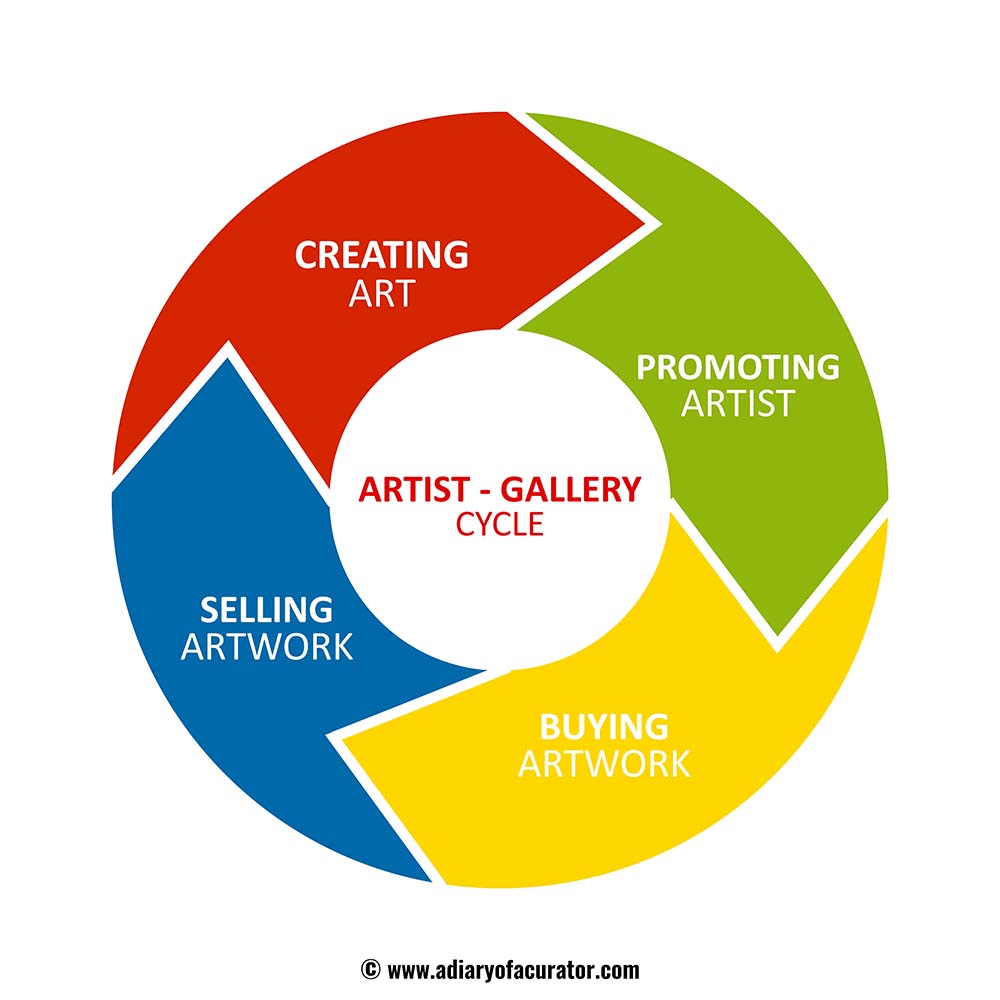Podcast
Episode 2: Adverse effect on the Stakeholders

80,000 – earned by the architect/ interiors / middle men / agent / art dealer and curator. So what does the artist, who has actually invested years of hard work in thought process and skill development, get?
fair deal?

Does this affect the artist?
Yes, big time. The galleries, auctions, museums and at the top, the living artists suffer due to these illegal activities.
How?
If the money does not go to the gallery, how will they pay the artist? Moreover, if the work does not sell from the artist’s collection, how will the artist earn his/her livelihood? Hence, the old age saying still exists in India that “if you are an artist that means you are poor”. You would not have enough money in your bank account. No one will wish to become a painter in Indian art market and hence there will be a ‘creative vacuum’ in the Indian art ecosystem. If this continues, art will only become a hobby than a serious profession. If such fraud interiors, architects, art dealers, galleries and curators run this kind of forgery business, our next generation will not see much of the true Indian art and its peak.
This used to happen with the music and film industry but with digitalisation and strict Laws, it is in much better condition than it was before.
As much as government’s role to create laws and protect rights is necessary, as responsible citizens, we are equally liable to discourage such illegal activities. If one cannot afford it, it is better not to have any art on walls than buying and encouraging fake and illegal artworks thereby snatching away someone’s rights and livelihoods.

How does it affect the consumer and art market?
Speculation of Fakes causes distrust among buyers which is very difficult to reverse. Comparing it with the diamond market, you would not buy diamonds from anyone or just ask your wedding planner to get a diamond set for your daughter. Obviously, you would yourself go to the jeweler and select or commission a design based on your choice because it is very personal (like art) and you trust the same jeweler from generations or through someone’s reference. This is how art is supposed be bought to avoid Fake in your collection.
It is a caution sign that before the buyers lose confidence in the Art market, the artists, galleries, curators and museums along with auction houses need to keep a tab on such activities and inform the legal authorities about it. Otherwise, the days are not far away when a buyer will stop buying art, fearing about fake or copied work for which later he might face legal actions or make a blunder in his investment.
Therefore, if we want to develop the Indian art market we have to support artists and genuine galleries in the primary market. Our society should encourage buying from reputed auction houses in order to strengthen our secondary market.
Photos and Text © Chaitya Dhanvi Shah

